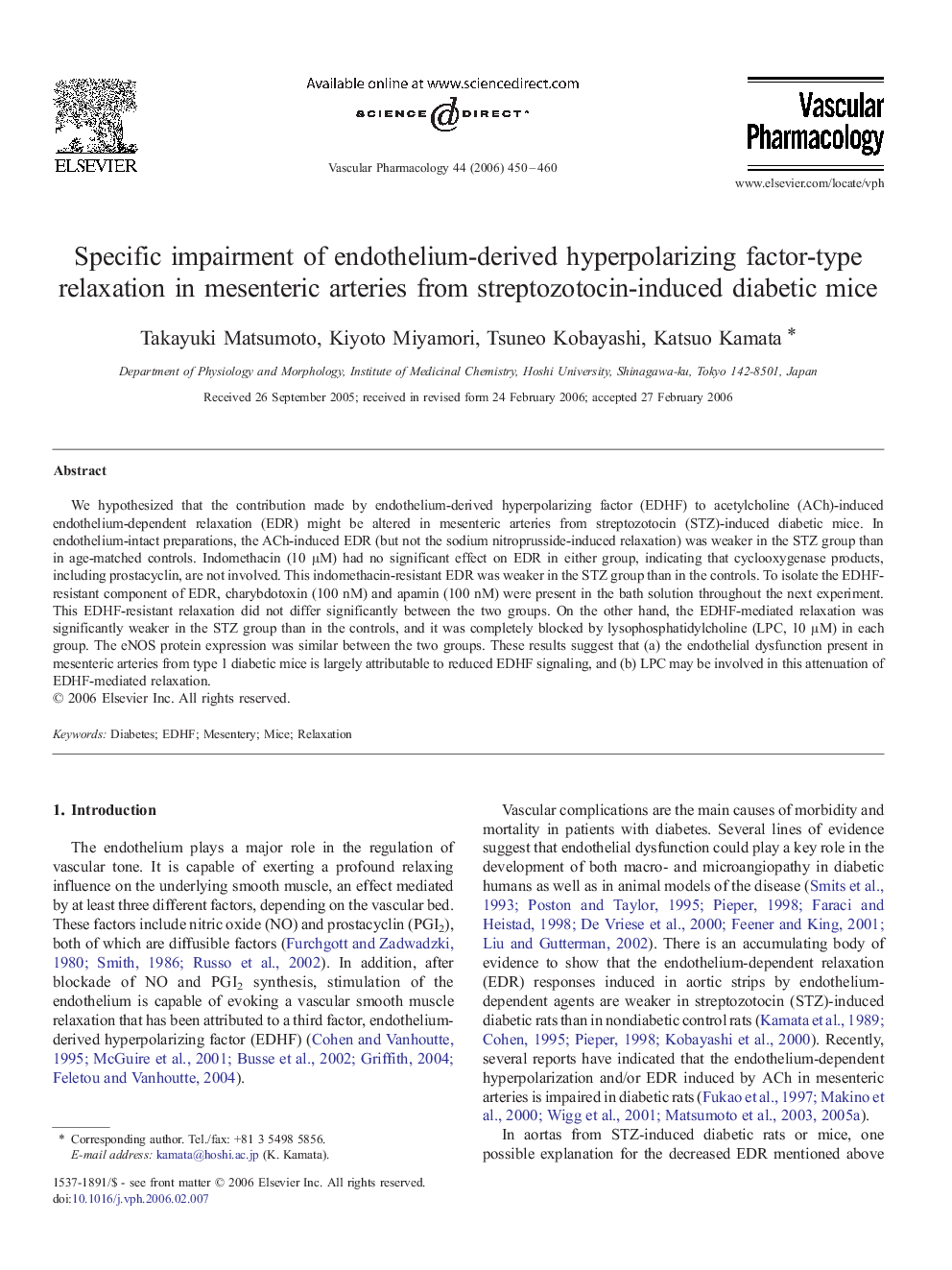| Article ID | Journal | Published Year | Pages | File Type |
|---|---|---|---|---|
| 2574734 | Vascular Pharmacology | 2006 | 11 Pages |
We hypothesized that the contribution made by endothelium-derived hyperpolarizing factor (EDHF) to acetylcholine (ACh)-induced endothelium-dependent relaxation (EDR) might be altered in mesenteric arteries from streptozotocin (STZ)-induced diabetic mice. In endothelium-intact preparations, the ACh-induced EDR (but not the sodium nitroprusside-induced relaxation) was weaker in the STZ group than in age-matched controls. Indomethacin (10 μM) had no significant effect on EDR in either group, indicating that cyclooxygenase products, including prostacyclin, are not involved. This indomethacin-resistant EDR was weaker in the STZ group than in the controls. To isolate the EDHF-resistant component of EDR, charybdotoxin (100 nM) and apamin (100 nM) were present in the bath solution throughout the next experiment. This EDHF-resistant relaxation did not differ significantly between the two groups. On the other hand, the EDHF-mediated relaxation was significantly weaker in the STZ group than in the controls, and it was completely blocked by lysophosphatidylcholine (LPC, 10 μM) in each group. The eNOS protein expression was similar between the two groups. These results suggest that (a) the endothelial dysfunction present in mesenteric arteries from type 1 diabetic mice is largely attributable to reduced EDHF signaling, and (b) LPC may be involved in this attenuation of EDHF-mediated relaxation.
